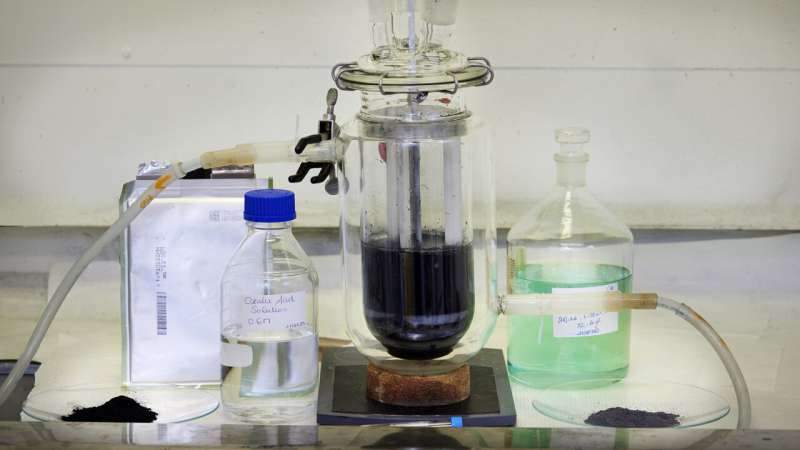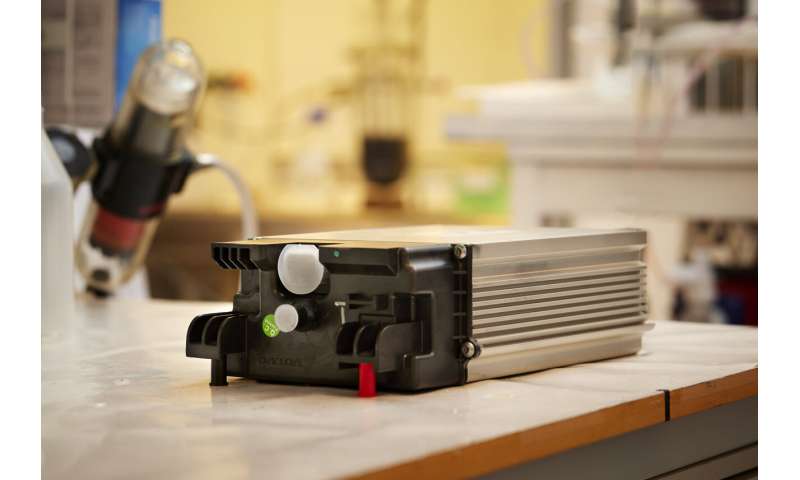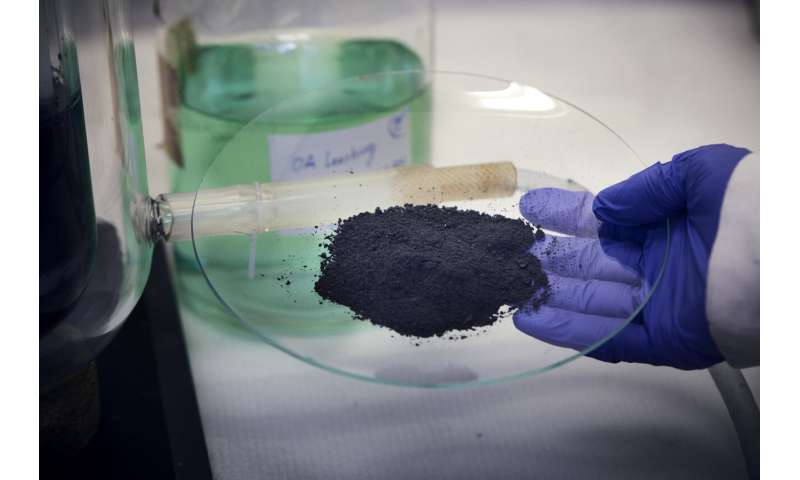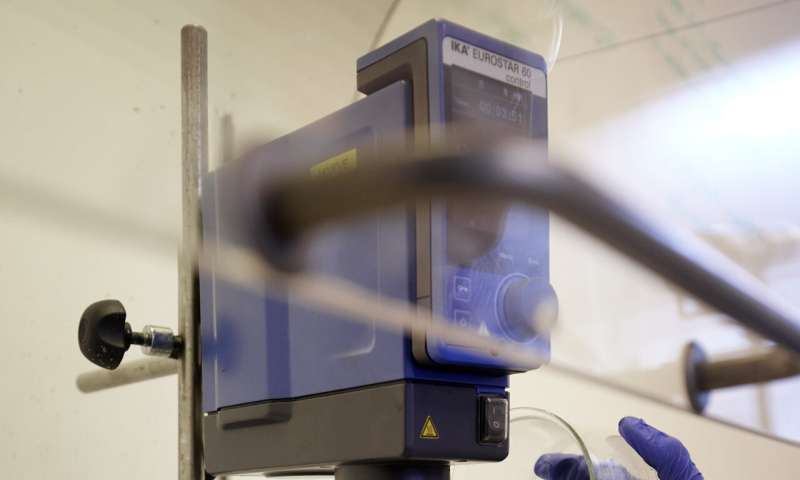This article has been reviewed according to Science X's editorial process and policies. Editors have highlighted the following attributes while ensuring the content's credibility:
fact-checked
trusted source
proofread
New recipe for efficient, environmentally friendly battery recycling

Researchers at Chalmers University of Technology, Sweden, have found a new and efficient way to recycle metals from spent electric car batteries. The method allows recovery of 100% of the aluminum and 98% of the lithium in electric car batteries. At the same time, the loss of valuable raw materials such as nickel, cobalt and manganese is minimized. No expensive or harmful chemicals are required in the process because the researchers use oxalic acid—an organic acid that can be found in the plant kingdom.
The article "Complete and selective recovery of lithium from EV lithium-ion batteries: Modeling and optimization using oxalic acid as a leaching agent" was published in the journal Separation and Purification Technology.
"So far, no one has managed to find exactly the right conditions for separating this much lithium using oxalic acid, while also removing all the aluminum. Since all batteries contain aluminum, we need to be able to remove it without losing the other metals," says Léa Rouquette, Ph.D. student at the Department of Chemistry and Chemical Engineering at Chalmers.
In Chalmers' battery recycling lab, Rouquette and research leader Martina Petranikova show how the new method works. The lab has spent car battery cells and, in the fume cupboard, their pulverized contents. This takes the form of a finely ground black powder dissolved in a transparent liquid—oxalic acid.
Rouquette produces both the powder and the liquid in something reminiscent of a kitchen mixer. Although it looks as easy as brewing coffee, the exact procedure is a unique and recently-published scientific breakthrough. By fine-tuning the temperature, concentration and time, the researchers have come up with a remarkable new recipe for using oxalic acid—an environmentally friendly ingredient that can be found in plants such as rhubarb and spinach.
"We need alternatives to inorganic chemicals. One of the biggest bottlenecks in today's processes is removing residual materials like aluminum. This is an innovative method that can offer the recycling industry new alternatives and help solve problems that hinder development," says Martina Petranikova, Associate Professor at the Department of Chemistry and Chemical Engineering at Chalmers.
Reversing order and avoiding the loss
The aqueous-based recycling method is called hydrometallurgy. In traditional hydrometallurgy, all the metals in an EV battery cell are dissolved in an inorganic acid. Then, you remove the "impurities" such as aluminum and copper. Lastly, you can separately recover valuable metals such as cobalt, nickel, manganese and lithium.
Even though the amount of residual aluminum and copper is small, it requires several purification steps and each step in this process can cause lithium loss. With the new method, the researchers reverse the order and recover the lithium and aluminum first. Thus, they can reduce the waste of valuable metals needed to make new batteries.
-

The researchers at Chalmers work with real spent car batteries from Volvo Cars. Here is a battery module, holding 14 battery cells. Credit: Chalmers University of Technology | Anna-Lena Lundqvist -

After the aqueous-based recycling method, the aluminum and lithium end up in the (greenish blue) liquid. The other metals, such as cobalt, nickel and manganese, remain in the dark “solids”, shown on the plate. Credit: Chalmers University of Technology | Anna-Lena Lundqvist -

The finely ground contents of a car battery cell are added to and dissolved in oxalic acid. By fine-tuning the temperature, concentration and time, the researchers have come up with an excellent new recipe for using oxalic acid – an environmentally friendly reactant ingredient found in plants such as rhubarb and spinach. Credit: Chalmers University of Technology | Anna-Lena Lundqvist
The latter part of the process, in which the black mixture is filtered, is also reminiscent of brewing coffee. While aluminum and lithium end up in the liquid, the other metals are left in the "solids." The next step in the process is to separate aluminum and lithium.
"Since the metals have very different properties, we don't think it'll be hard to separate them. Our method is a promising new route for battery recycling—a route that definitely warrants further exploration," says Rouquette. "As the method can be scaled up, we hope it can be used in industry in future years," says Petranikova.
Petranikova's research group has spent many years conducting cutting-edge research in the recycling of metals found in lithium-ion batteries. The group is involved in various collaborations with companies to develop electric car battery recycling and is a partner in major research and development projects, such as Volvo Cars' and Northvolt's Nybat project.
The study was conducted by Léa Rouquette, Martina Petranikova and Nathália Vieceli at the Department of Chemistry and Chemical Engineering at Chalmers University of Technology, Sweden.
More information: Léa M.J. Rouquette et al, Complete and selective recovery of lithium from EV lithium-ion batteries: Modeling and optimization using oxalic acid as a leaching agent, Separation and Purification Technology (2023). DOI: 10.1016/j.seppur.2023.124143















